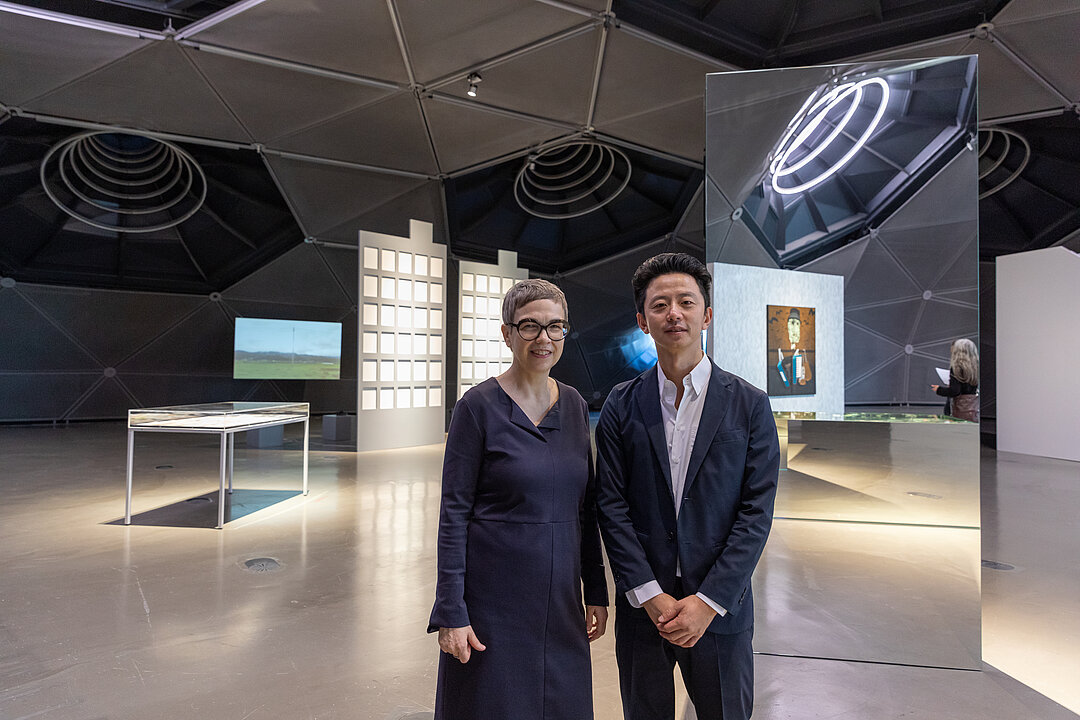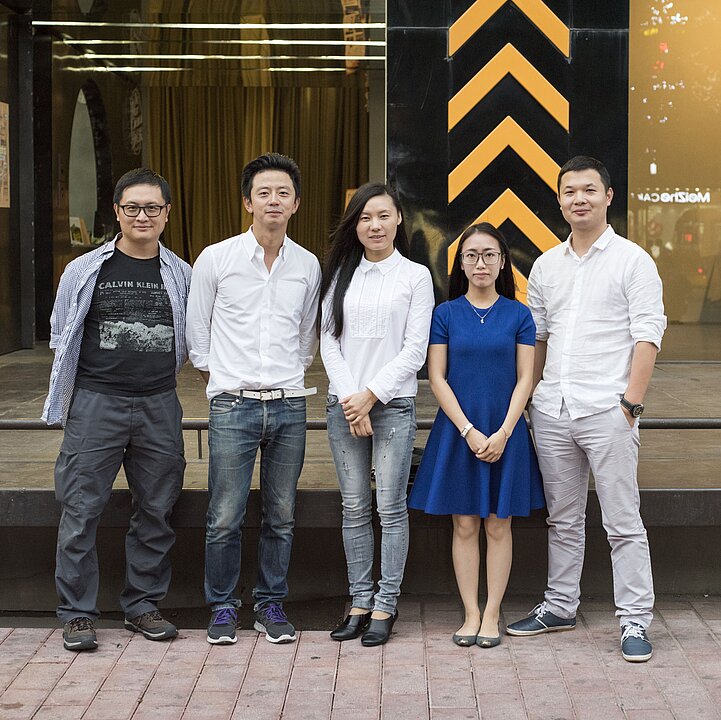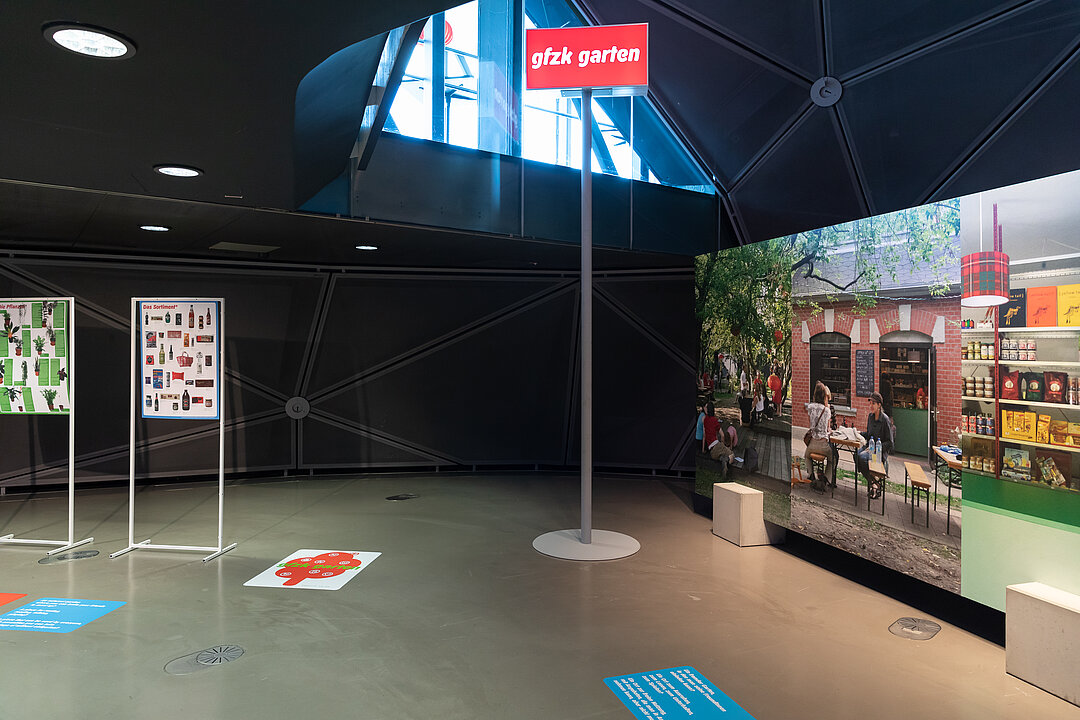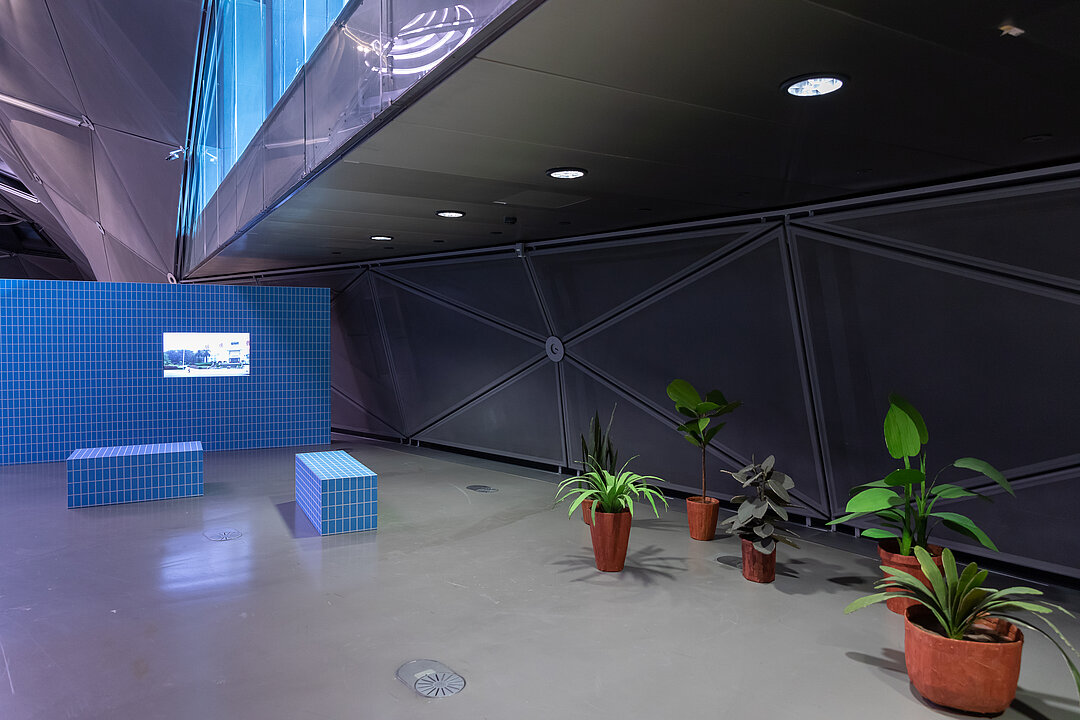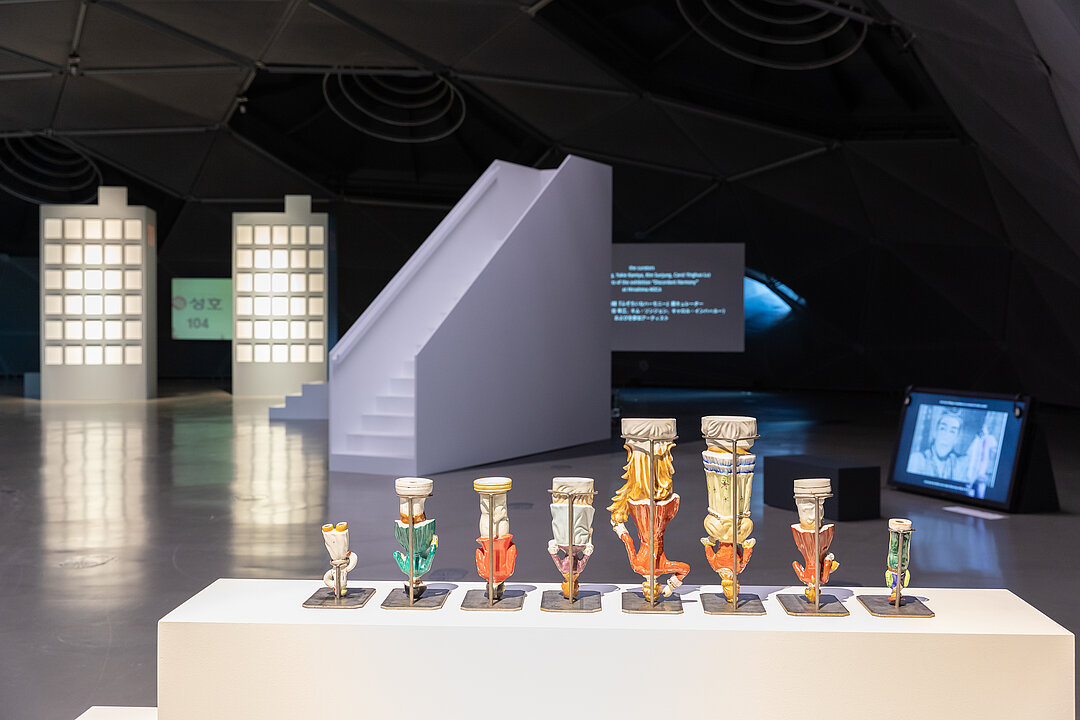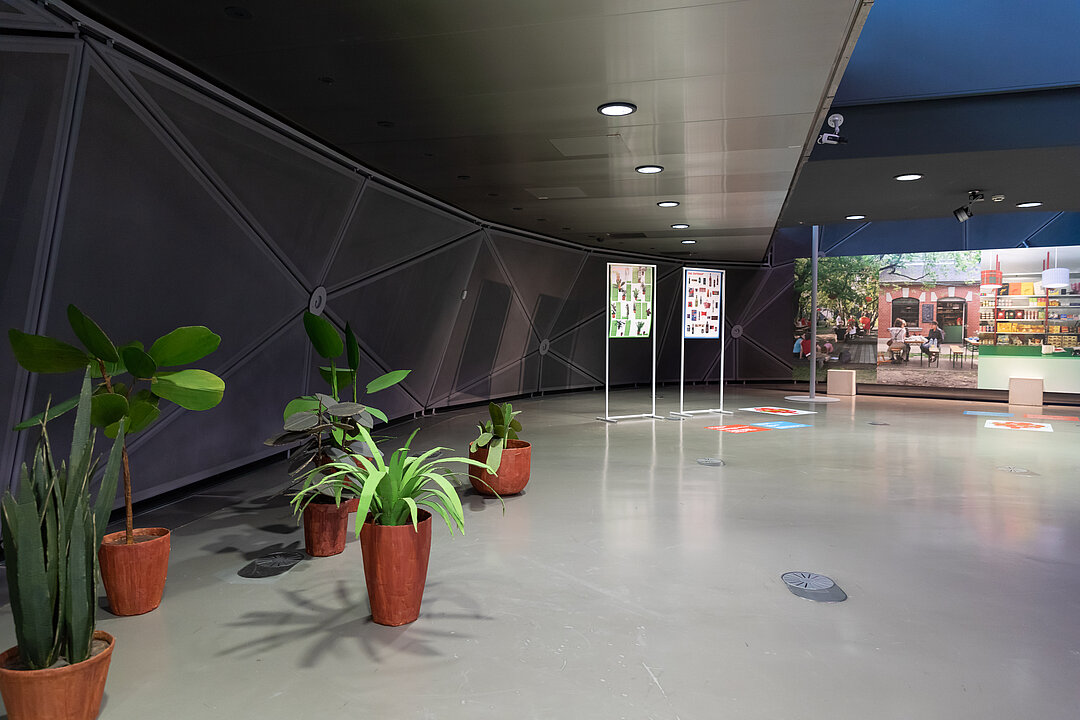Jun Yang's solo exhibition explores fundamental questions around artistic endeavour: What expectations do we have of artists? How do they present themselves, and how are they presented? How much can artists create by themselves and to what extent is a "work" created in exchange with others? What significance do an original, a unique piece, series and reproductions have in public perception and on the art market?
Early in 2018, Jun Yang published The Monograph Project, a six-volume monograph on the artist and his work that challenges monographic conventions and biographical writing in a paradoxical reversal. Formats, papers, covers and even the spelling of the artist's name change from volume to volume: from June Young, Yang Jun, Tun Yang, Jan Jung, Yi Chuan to Jun Yang. This suggests different artists. And this is exactly what interests Yang: how to disrupt the narrative of the authentic, genius creator - a narrative that has proven to be particularly convenient in the branding of artists and their work.
The solo exhibition at the Kunsthaus Graz pursues this theme. Like the monograph, the exhibition itself becomes the subject of artistic investigation. The subtitle of the exhibition focusing on "the" artist, "the" work and "the" exhibition seems exaggerated, just as the presence of the artist's name on the roof and around the Kunsthaus seems excessive. The resulting exaggeration can be read as a parody, mocking the idea of the exceptional (male) artist, his unique work and the prestigious solo exhibition.
In his works, Jun Yang deals with various forms of identity formation and thus with attributions and definitions, which in turn are connected with evaluations. What does it mean to be defined as Austrian, European, Chinese or Japanese, or to define oneself?
Jun Yang himself has repeatedly pointed out that valuations change over time. Today, the People's Republic of China is very present politically and culturally: it is a world power with a corresponding influence on global events.
Yang addresses cultural clichés and stereotypes not only with regard to China or Austria but also those of the art world itself. At the Graz show, the format of the solo exhibition as such is examined in artistic and curatorial terms. A solo show is usually associated with the idea of a strong artistic identity which is to be clearly conveyed through the exhibition. This then comes close to exaggerating, transfiguring, even mystifying the artist's identity, name, works and artistic creation in general. The exhibition Jun Yang. The artist, the work and the exhibition challenges the unique status of the artist on various levels: through its title, visual communication and the participation of other authors. Ultimately, Yang's solo exhibition becomes a collective enterprise with many participants:
Erwin Bauer, Mike Kelley/Paul McCarthy, siren eun youn jung, Lee Kit, Oliver Klimpel, Michikazu Matsune, Yuuki Nishimura, Yuki Okumura, Koki Tanaka, Maja Vukoje, Jun Yang and Bruce Yonemoto. All of these have a specific connection to Yang through their works. Sometimes he is the client, sometimes co-author, co-performer, initiator, creative muse, designer/exhibitor or even the subject of the presentation.
The concept of work also undergoes a transformation in the exhibition: painting, photography, drawing, poster, film – each clearly identifiable and distinguishable work facets and spatialises itself in the course of the exhibition. At the beginning of the exhibition, classically presented on a white support, the separation between work and support becomes blurred – the wall and pedestal themselves becoming the work – in the same way that genre boundaries between art and design (graphics, exhibition display) are eroded. Walking through the exhibition, one enters a surreal space that combines reflections, real and artificial shadows, natural light and artificial light.
The exhibition begins with the conventions of the solo exhibition, a strong artist subject, a clearly identifiable and assignable work, a curator – and ends with a group exhibition, a differentiated work concept, two curators, and finally two Jun Yangs. Following this logic, instead of one poster for the exhibition there are two, i.e. two graphic identities (designed by two graphic teams).
Alongside this, from February 15th, 2019, the Neue Galerie Graz addresses issues of the reproducibility of art, the significance of the original work, the one-off work and reproduction, in the exhibition titled Too Much Is Not Enough.






















